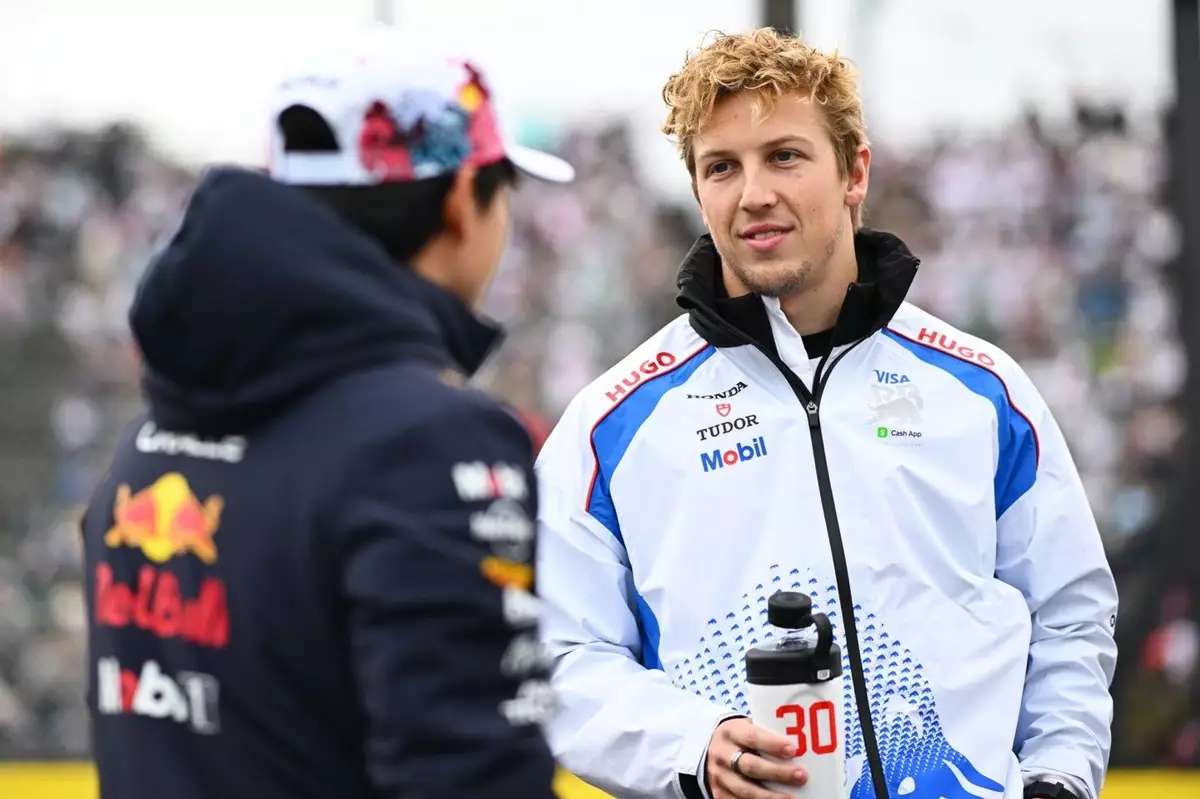The competitive landscape of Formula 1 is notorious for its ruthlessness, where talent is measured not only by speed but also by the ability to navigate the intense psychological pressures of the sport. At Red Bull Racing, the narrative surrounding Liam Lawson and Yuki Tsunoda underscores this truth. Both drivers find themselves in the challenging environment of the RB21—a car that holds secrets to extraordinary performance but only for those able to harness its capabilities within a tight operational window.
Lawson, who has faced his share of challenges since his return to the racing circuit with the Racing Bulls, epitomizes the struggle many young drivers face when stepping into a high-stakes team environment. Despite glimpses of promise, Lawson’s ability to consistently extract performance has been hampered by penalties and a gradual acclimatization to his current vehicle. His recent experience is a stark reminder of the harsh nature of F1; though he has carved out some semblance of pace, he often finds himself overshadowed by teammate Isack Hadjar, who seems to have harnessed the car’s potential more effectively.
Comparative Progress: Lawson vs. Tsunoda
When contrasting Lawson’s trajectory with that of Tsunoda, it becomes clear that experience plays a crucial role. Tsunoda’s capability to maximize his car’s performance without the luxury of extensive pre-season testing highlights his growing confidence and adaptability. Lawson’s struggles—often relegated to battling for P9 or P10—underscore a grim reality: the midfield scrap is no less fierce than the battle for podiums. Tsunoda, meanwhile, appears to be navigating the circuit with a palpable sense of purpose, as he strives for top-ten finishes and seeks to break into the coveted Q3 during qualifying sessions.
Lawson’s performance at recent races further amplifies this dynamic, particularly during the Saudi Arabian GP, where Tsunoda’s early overtaking maneuver against Fernando Alonso showcased his ability to capitalize on tactical variations. Lawson’s slower pace meant he was left trailing, ultimately costing him valuable time and positions. The fact that Lawson finished only narrowly behind Hadjar—a result obscured by circumstances beyond his control—serves as a bittersweet metric of his performance and potential.
Resilience in the Face of Adversity
A renewed focus on Lawson’s mental state reveals an athlete grappling with inner doubts. Although he publicly claims that his confidence remains unshaken following his demotion, the truth likely lies elsewhere. The psychological toll of racing at this level is immense; every driver experiences highs and lows, shaping the narrative of their careers. Lawson stands at a pivotal juncture. To transcend his current struggles and evolve into a sustainable F1 competitor, he may need to undergo a period of introspection and vulnerability. It is imperative for him to confront the challenges head-on—accepting that setbacks are a part of an athlete’s journey and that resilience defines the truest champions.
The words of the iconic band Chumbawamba encapsulate this idea: how quickly a driver can rise after being knocked down shapes their legacy. Motorsport history is filled with tales of drivers who have turned difficulties into comebacks, and Lawson has an opportunity to redefine his narrative by aligning his mental strategies with his racing capabilities.
The Path to Prominence: Focus on the Future
Both Lawson and Tsunoda must recalibrate their expectations. Red Bull is not a team that currently positions either driver as a direct threat to the established elite, but they are contenders in the battle for midfield supremacy. Lawson must shift his focus away from comparisons with the likes of Aston Martin and Sauber, aiming instead to solidify his standing within the team’s ranks. The ability to consistently finish in the points is a tangible target that could spell the difference between a fleeting F1 career and a sustainable future filled with potential.
For Tsunoda, the immediate challenge revolves around unlocking the true performance of the RB21 during qualifying, a skillfully executed lap could potentially position him among the front-runners. His gradual understanding of the car indicates a promising future if paired with the patience and technical acumen required to maneuver this high-stakes environment.
The performance gap in Formula 1 can be unforgiving, but for Lawson and Tsunoda, the road ahead is filled with opportunities for growth. If they choose to embrace the complexity of the challenge, they might just carve out a future in F1 that reflects their true capabilities.


Leave a Reply